So you've been diagnosed with RSD/CRPS... what now?
The diagnosis of any "incurable" disease, let alone one as life altering as RSD/CRPS is a blow, but it needn't be a death blow. In my work as an administrator in an RSD/CRPS support group, and a participant in several others, I so often "see" the newly diagnosed, reeling under the force of that blow, wondering "what now"?
I so vividly remember finally being diagnosed myself after 3 long, unbearable years. First the relief of "it's not in my head, I'm not going insane", then the terrible realization of what they are (and aren't) saying. This is incurable. This is forever. This will not go away and it may spread. And the more you learn, the more terrible the information, which piles up and up and up into a wall of total terror...

And the docs offer... drugs, drugs, more drugs, and maybe a few incredibly invasive procedures to try if the drugs don't cut it... and the fact is, for most of us, they won't. They probably will help, if your doctor isn't afraid of opiates and if you are lucky enough to tolerate pharmaceuticals (the difference in my quality of life since being able to tolerate a decent pain medication... just the last 5 years of my journey... is substantial), and if the side effects aren't more than you can withstand, but they will not give you back the life you had. So what now? Because of the incredible cognitive demands you are facing, (see this wonderful article explaining this new part of your reality) I think I'll go list format from here:
- Get information!! Learn, learn, learn. Here's a couple of crucial resources:

- RSD/CRPS Research and Developments, a fantastic page whose wonderful admins are tracking the fast changing data on our condition; they will also answer questions and try to help steer you toward specific info you're trying to find. Wonderful people and a wonderful resource!
- Pain Topics website is a fantastic resource for info about mainstream and pharmaceutical treatment of pain. Especially recommended, Forrest Tennant's work on Intractable Pain
 - Keep positive!

Don't allow yourself to get overwhelmed by fear and worst case scenarios. While you are learning all the possible ramifications and prognoses for this beast, it can be pretty scary indeed. But remember there are many things that you can do to create a better outcome, and the earlier you start, the better chance you have. People do achieve remission, sometimes for decades, sometimes "for good". Best odds are if you are young, diagnosed and treated early, but you can also beat the odds... mature people have achieved remission, those of us with late diagnoses sometimes do as well. And even without remission, it is possible to halt the spread, to keep it more "limb confined" if you are able to use a good range of western and complementary treatments. Almost all pain clinics nowadays use a multi-discipline approach, because it's proven to be the most successful.
Even if you should be one of the less fortunate, like me, and experience wide ranging, aggressive spread and "full body" CRPS with organ complications, progress is *always* possible. I lost complete use of both of my hands for many years due to constant, brutally painful dystonic spasm. I have regained incredible use of my hands and arms in just the last few years, and am building on that daily. And no matter how bad the situation, because this is a "plastic" disorder, it means that change, including positive change, is always possible. Remember this on the bad days, remember it on the good days; make it your mantra, not only because it's true, but because it can help make it happen. Our brains are incredibly powerful. I'm not saying that wishing will make it so, ‘cause if it would, well... for all I love y'all I might be doing something else! But there is oodles of research and personal experience backing up the positive benefits of a positive attitude, especially in neuroplastic chronic pain condition. Here's a lovely piece by a wonderful pal of mine who is an absolute expert in the art of staying positive. Take a few tips from this supergal; I try to ! So we're keeping positive, staying strong; now what can we do to back up that positive attitude?
- Get emotional support.
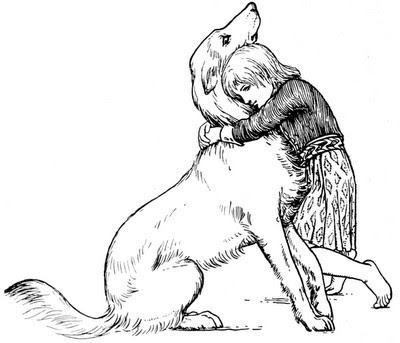
No matter how loving your family and friends, finding fellow sufferers is an incredibly important step in learning to live with your beast. No one but those who have been down this road can truly understand. Your fellow sufferers are a resource of information, empathy, and caring like no other. We are incredibly fortunate to live in the internet era; you can live on an island, out in the toolies (like I do!) and still find your kindred on line. I have much loved friends and fellow sufferers all around the globe and they are the greatest gift that has come to me through this experience. There are many wonderful bloggers out there writing about this new world you've entered; I'm trying to link to my faves in this post, to get you introduced to these wonderful resources! Also check out the wide range of support groups available online. I do recommend a cautious approach until you know who you are dealing with; not all support groups are created equal. You need good strong administrators who have appropriate rules of conduct and ensure they are lived by. Occasionally, people in pain lash out and act inappropriately, (see one aspect of why this happens... If even mild stress makes emotional control harder, you know that the stresses of chronic pain and increasing disability can really do a number on us). It's understandable, but we are all under stress, impacted by stress, and you don't need to be on the receiving end of someone else's loss of control! Good admins will make sure everybody plays nice, and a good environment for healing will be maintained.
Sooner or later on your journey, and probably sooner, I also recommend a highly trained, empathetic pain management psychologist. They have a wide range of tools to help you, from cognitive/behavioral to hypnosis to guided imagery; important techniques in managing the pain, especially in getting through pain flares and in learning to manage the many stresses of this disorder and live with the changes you are facing. You want to keep your stress as low as possible.
Try to squeeze as much positive energy and love into every day that you can. Super important are your family and friends. They need to be educated about your condition, and enlisted as active helpers right from the get go; they can be your support staff, if the love and understanding are there. Be honest with them about your condition, your limitations, your fears, the things that seem to help and the things that really hurt; from the youngest child in your life to the oldest friend, give them the chance to be your supporters by making sure they understand. Please feel free to use my " What is RSD/CRPS sheet" as an educational tool, and share this site, and others that have information about the disorder, with them. And last but definitely not least, the wordless, utterly empathetic, utterly "stringless" loving support from an animal friend can be the greatest boon on earth. If you are so blessed as to have a companion animal, they will know when you are suffering; take the love that they will so freely offer, and experience the comfort of loving them right back.
- Get relief.
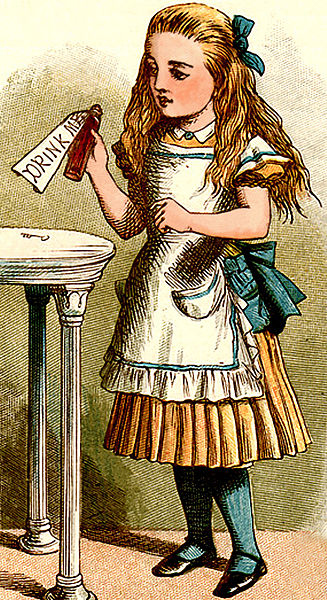
Although many of us "oldtimers" become frustrated with the uni-vision focus on pain (as the dysautonomias are so often so badly under-treated) there is a good reason that pain management is the cornerstone of treatment for this beast. Pain begets pain with RSD/CRPS, and it is critical to your long term outcome to have the best relief you possibly can. Do be cautious about all medications, but do not buy into the current media generated hysteria about opiate medications; they may be a good friend to you. (Forest Tenant's work on appropriate use of opiate medications for chronic pain is an important read.) But do ask your doctors to titrate up from a very low dose; many of us are surprisingly drug sensitive. You may not get any better relief from a dose high enough to leave you groggy and unable to be present in your life than from a very low, even pediatric dose. Start low, and see how much your body actually needs, keeping in mind; this medication will not take away all the pain. It will, ideally, take away enough to give you decent quality of life most of the time.
Many patients with this disorder end up grossly over-medicated as they and their doctors seek to completely abolish the pain. I know it sounds harsh, but my experience, and the experience of so many sufferers before me leads me to believe that complete pharmaceutical pain management is not a reasonable or achievable goal. I know that right now you are probably completely overwhelmed with the experience of chronic pain, but you are stronger than you think you are. Aim for a dose of medication that leaves you able to function and have a life, but cuts the pain enough so you can get through the day (and night! It's important to get adequate sleep, even if you have to use medication to do so until you get all your alternative techniques on board. Sleep disruption can be a very potent and compounding factor in the maintenance of the chronic pain cycle). You'll need something for breakthrough pain, almost certainly a muscle relaxant, possibly a sleep aid, and there are other meds that some have found helpful including SSRI's and anti-seizure meds, but I strongly advise keeping the total pharmaceutical load as low as you can while striving for adequate relief.
It's a delicate balance, but you will find your way, especially if you are willing and able to also look into the many natural and alternative options to help bear the load. This website, and this book, are all about those options, and I hope that I will be able to help you sort through them to find your perfect plan for beast taming. The package will be different for each of us, but there are plenty of options to choose from. For now, just get the basic pharmaceuticals on board, and be prepared to use extra if you need to while you strive to...
- Get mobile.
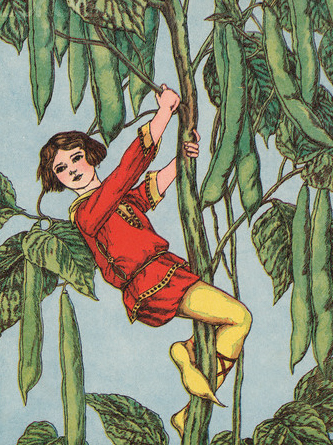
Especially in the early days, but all through the journey, this is critical. In the case of adolescents, aggressive pain management coupled with aggressive physiotherapy is among the best hopes for achieving remission. Same goes for adults or those with a later diagnosis, but a little more cautious approach must be taken. Make sure that you are adequately medicated for your physio, and make sure that your therapists are well educated about RSD/CRPS. If they aren't at first, you may have to be their educator, but they must learn to work with the disorder, not against it.ÂIf I have learned one thing, it is this: RSD/CRPS will not be forced; if you try it will bite back, and hard. That is why you must be adequately medicated for the hard physio pushes. You also have to learn to listen to your body and know when to slow down and when to stop. Your therapists must understand that they need to proceed with caution, and that many of the adages they may have been taught are not true with this disorder: "To hurt is not to harm" is a great big load of organic fertilizer when it comes to CRPS. If you make your body really hurt with your physio efforts, you are training it to hurt some more. CRPS is like a seizure disorder; each time there is a pain flare, a track is made in the brain that makes it easier for that to occur again, especially from the same triggers. You want to train your body that it can move again, safely and without harm; so you must go very, very slowly and incrementally, and you must have adequate prophylactic pain relief for the task.
Warm water therapies can be very helpful; just make sure the temperature is right for you... warm but possibly not too warm. Make sure not to do too much, just because it feels like you can in the warmth and comfort of the water; slow and steady wins the race. Think the tortoise, not the hare, but think a very determined and dedicated tortoise. I recommend cranial osteopathy if you have a good practitioner near you. (Check and see if you do by clicking the link at the top left of this website) Osteopathy has been a primary force in giving me back the use of my arms, and is wonderful for pain management, functional rehabilitation and central nervous system calming (an important skill that we'll be talking lots about!).
- Get the backups on board.

Here's where the alternatives come in... this post is getting bulky (!) and your poor old writer's hands are starting to be pretty hurty (oops! How about that pacing?!) so I'll be introducing you to some of the best of those in the upcoming blog series "Top 10 Alternative Treatments for Chronic Pain". But there are many options and many of those that are inexpensive, accessible and/or easy to learn, (so many I've had a hard time deciding which 10!) and that is the point of this page and this book. Important tip: try to focus not on the "magic bullet" but on finding little snippets of pain relief. There are many natural, non-toxic tools and tricks that can just cut the edge, say 5% or 10% pain relief... add a ½ a dozen of those together and all the sudden, you're really feeling better!
Those little snippets can be jewels beyond price. The jewels that I'll be covering in the Top 10 Alternative Treatments for Chronic Pain:
Â
- Meditation/spiritual practice/energetic medicine
- Cognitive/Behavioural techniques
- Acupressure/TCM Meridian work
- Nutritional (diet)
- Nutritional (supplements)
- Herbal therapies
- Homeopathy
- Warm water therapies including Watsu
- Osteopathy (Cranial or British Trained)
- Feldenkrais
- Learn the importance of pacing.

I've already touched on this several times, but it's so critical, especially when you are first dealing with this new existence, that it deserves its own point. Your life has changed. All the rules have changed and they may change from day to day and minute to minute. It's a lot to keep up with. You cannot afford to indulge in trying to live in the past. You cannot force your body to do what it cannot do. You have only a finite amount of resources to use before you are tapped for the day. (Here's a great link to the "Spoon Theory"; a lovely, usable metaphor for the new restrictions you are facing) And I know I've already said it, but it sure needs repetition for me (!); whatever you do, you're probably going to have to think dedicated tortoise, not free-wheelin' hare.
It's a long term learning process, and the balance isn't always easy to find. For example, this post is too darn long!! I've hurt myself doing this, and I will pay, and my family will pay, golldarnit! So I'm doing what you will need to do, and cutting it short when the realization sinks in that you've pushed your limits too far. (Though much, much better is to stop well before that point!) I need to learn to make my posts a little shorter, or break them up. Just another illustration of why this topic is just so important! I'll leave you now, with the last of my tips for the newly diagnosed...
- Call in your angels.
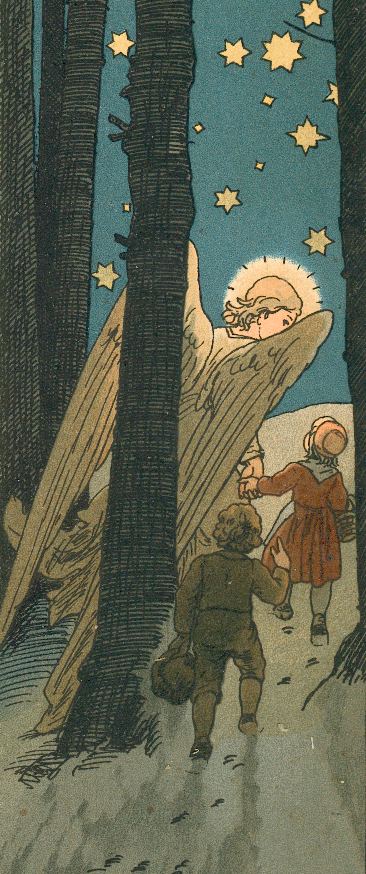
This means a number of things. It means learn to ask for help and learn to accept it... from your loved ones, from friends, from your community, and from spirit. If ever there was a time in your life to explore your spirituality and find a place of comfort, this is it. Perhaps return to the faith of your childhood, or your ancestors, perhaps explore something new. You need not profess a belief in anything that you aren't ready for, and spirituality, even prayer, need not be remotely Christian (although a Christian perspective is helpful for many), or attached to any organized religious perspective at all. It might be meditation, it might be taking time to bathe yourself in the glory of nature; the sounds of birdsong and the scents of the forest, it may come through artwork and creative expression, but this is a time for spirit. A time to call in your angels.
This beast is a fierce one, the path through its forest is dire and dimly lit, there may be fear and suffering, trouble ahead. But you have inner strengths you have not met yet, and there are guides and helpers to help you find it. Be they known or deep in mystery... a library, a chapel, a flower garden or forest, a teacher, a preacher, the deep blue sea or the velvet star-filled sky at night, the angels or the fey; make room for the still small voice that can touch your heart when you need it most, that private place perhaps not yet explored inside you that will give you the courage when the path ahead seems like more than you can bear. The help may come in any manner of ways, but the help will come if you'll open the door to let it in.
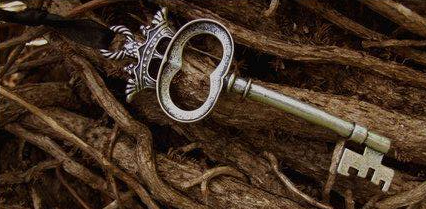
Well, I'm off to put my hands into warm water, take some homoeopathic arnica and magnesia phosphorica, maybe a little of my special herbal blend tincture and take the licking my family will give me for being so crazy as to write a post this long... Keep your chins up, stay strong, and know that you can do this. I'll see you soon, my friends. <3
Author: Lili Wilde
Date Posted: 2013-08-27 Date Last Edited: 2016-02-28 17:14:01
